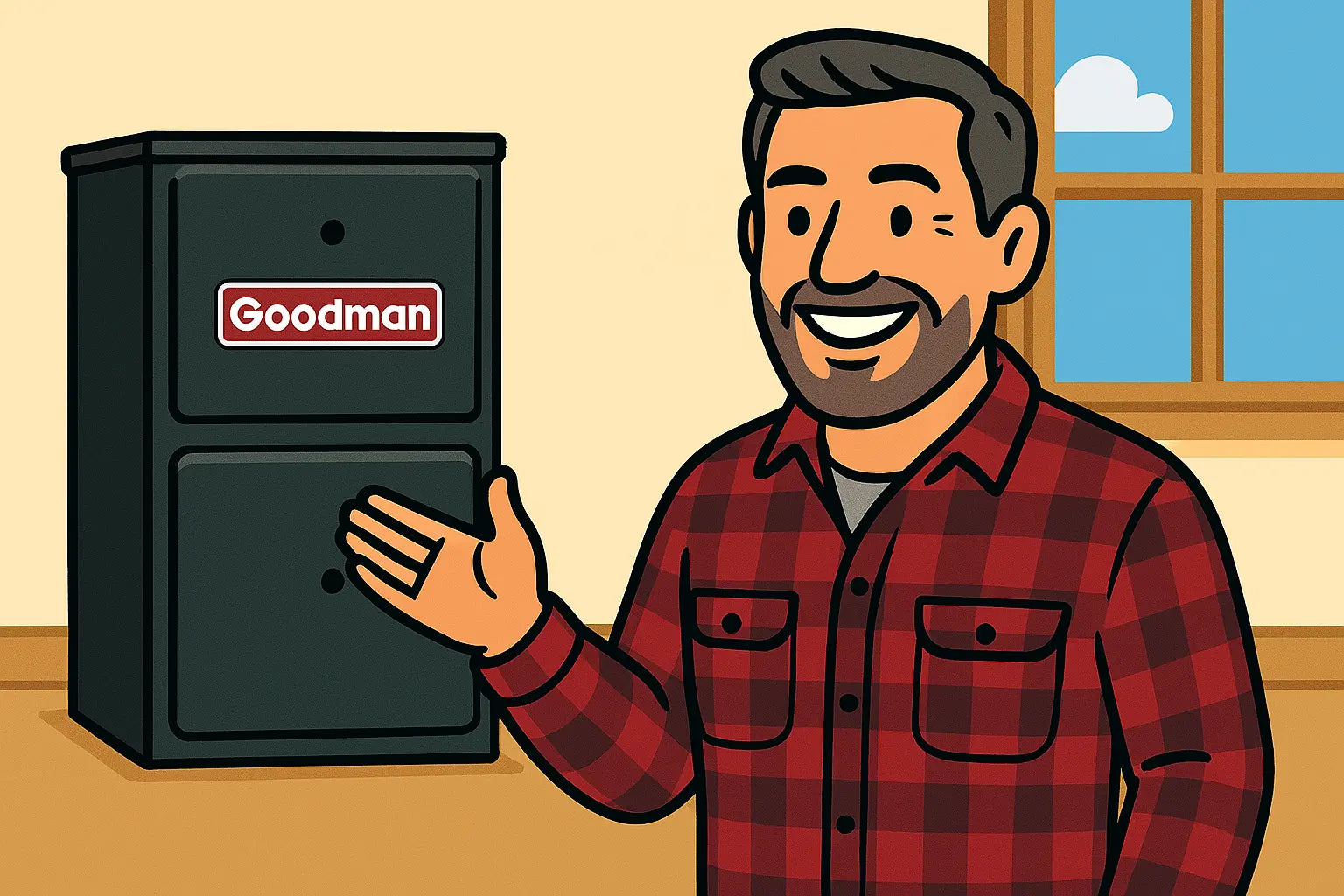Introduction: Mike Here!
Installing a furnace isn’t one-size-fits-all. The Goodman GR9S920603BN can be installed as an upflow or horizontal system, and the right choice depends on your home’s layout, ductwork, and comfort needs. Choosing correctly ensures proper airflow, efficient heating, and a long-lasting system.
If you want to check full specs before deciding, visit the Goodman GR9S920603BN product page.
Upflow Installation
In an upflow configuration, air is drawn in from the bottom and pushed out through the top. This is typically used when the furnace is located in a basement or crawlspace.
Pros:
-
Works well with vertical duct runs.
-
Efficient for homes with basements or low ceilings.
-
Easier access to filters and blower components.
Cons:
-
Requires sufficient vertical clearance above the unit.
-
May not be suitable for tight attic or horizontal applications.
For more on upflow installation specifics, Carrier has a great guide.
Horizontal Installation
In horizontal installation, air is drawn from one side and pushed out the other, often used in attics, crawlspaces, or tight utility rooms.
Pros:
-
Ideal for low-clearance spaces.
-
Flexible placement options in attics or closets.
-
Can save space while maintaining airflow efficiency.
Cons:
-
Requires proper pitch to allow condensate drainage.
-
Slightly more complex installation than upflow.
For details on horizontal installation best practices, see Energy.gov’s heating system guidelines.
Key Considerations for Choosing the Right Configuration
-
Available Space: Measure the room and ceiling height where the furnace will sit.
-
Ductwork Layout: Vertical ducts favor upflow, horizontal duct runs may require horizontal installation.
-
Maintenance Access: Ensure enough space for filter replacement, blower inspection, and future servicing.
-
Efficiency: Both configurations perform efficiently when installed correctly, but airflow restrictions can reduce system performance.
For expert guidance on duct and airflow considerations, check out ACCA’s duct design standards.
Tips for a Smooth Installation
-
Always follow manufacturer guidelines in the installation manual.
-
Verify the airflow direction matches the configuration.
-
Inspect clearances and venting to prevent airflow issues or safety hazards.
-
Double-check the filter orientation and blower connections before powering the unit.
For detailed installation diagrams, see Manualslib’s Goodman GR9S920603BN manual.
Final Thoughts from Mike!
Whether you choose upflow or horizontal, the key is proper planning, correct placement, and following manufacturer guidelines. The Goodman GR9S920603BN is versatile enough to fit both applications, but making the right choice ensures optimal efficiency, airflow, and comfort in your home.
For full specs, installation tips, and to review your configuration options, visit the Goodman GR9S920603BN product page.
Need to know how to read error codes with this system? Visit: Too Many Beeps.
Stay safe, measure carefully, and enjoy efficient heating! 🔧🔥
- Mike, your cool HVAC neighbor!







